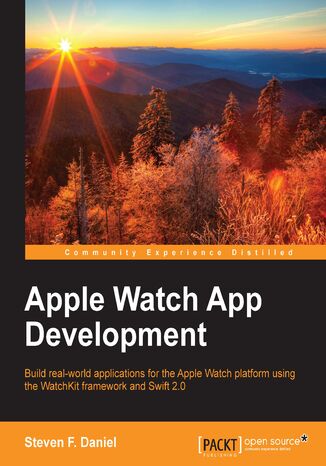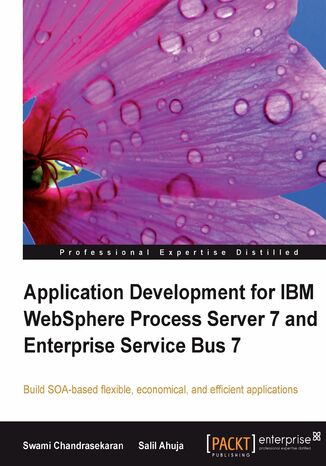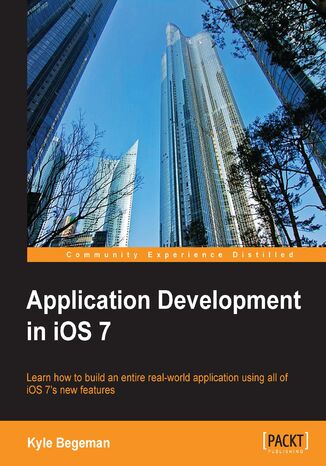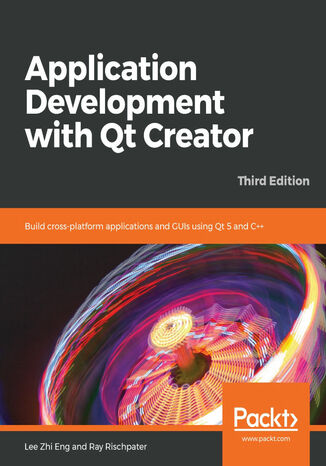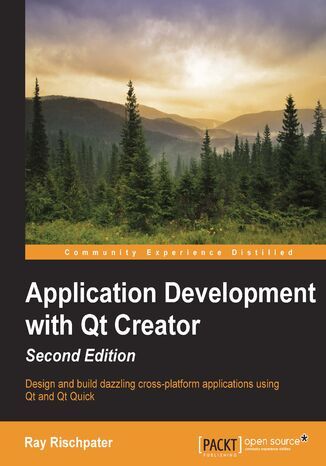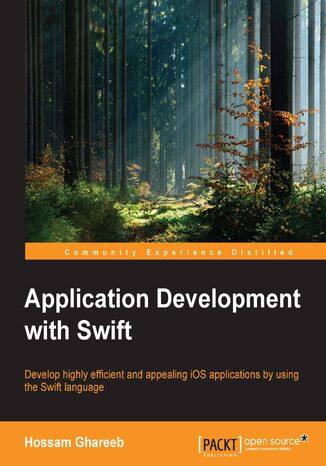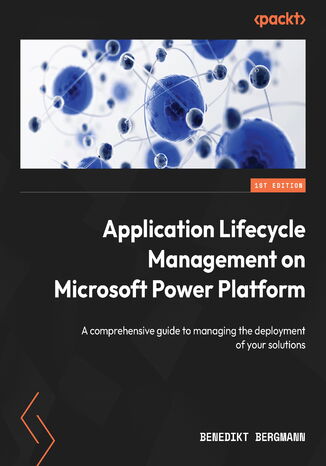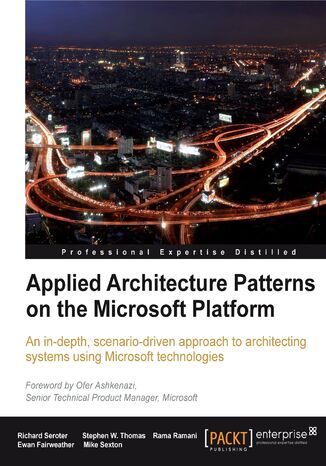Категорії
Електронні книги
-
Бізнес та економіка
- Біткойн
- Ділова жінка
- Коучинг
- Контроль
- Електронний бізнес
- Економіка
- Фінанси
- Фондова біржа та інвестиції
- Особисті компетенції
- Комп'ютер в офісі
- Комунікація та переговори
- Малий бізнес
- Маркетинг
- Мотивація
- Мультимедійне навчання
- Нерухомість
- Переконання та НЛП
- Податки
- Соціальна політика
- Порадники
- Презентації
- Лідерство
- Зв'язки з громадськістю
- Звіти, аналізи
- Секрет
- Соціальні засоби комунікації
- Продаж
- Стартап
- Ваша кар'єра
- Управління
- Управління проектами
- Людські ресурси (HR)
-
Для дітей
-
Для молоді
-
Освіта
-
Енциклопедії, словники
-
Електронна преса
- Architektura i wnętrza
- Безпека життєдіяльності
- Biznes i Ekonomia
- Будинок та сад
- Електронний бізнес
- Ekonomia i finanse
- Езотерика
- Фінанси
- Особисті фінанси
- Бізнес
- Фотографія
- Інформатика
- Відділ кадрів та оплата праці
- Для жінок
- Комп'ютери, Excel
- Бухгалтерія
- Культура та література
- Наукові та академічні
- Охорона навколишнього середовища
- Впливові
- Освіта
- Податки
- Подорожі
- Психологія
- Релігія
- Сільське господарство
- Ринок книг і преси
- Транспорт та спедиція
- Здоров'я та краса
-
Історія
-
Інформатика
- Офісні застосунки
- Бази даних
- Біоінформатика
- Бізнес ІТ
- CAD/CAM
- Digital Lifestyle
- DTP
- Електроніка
- Цифрова фотографія
- Комп'ютерна графіка
- Ігри
- Хакування
- Hardware
- IT w ekonomii
- Наукові пакети
- Шкільні підручники
- Основи комп'ютера
- Програмування
- Мобільне програмування
- Інтернет-сервери
- Комп'ютерні мережі
- Стартап
- Операційні системи
- Штучний інтелект
- Технологія для дітей
- Вебмайстерність
-
Інше
-
Іноземні мови
-
Культура та мистецтво
-
Шкільні читанки
-
Література
- Антології
- Балада
- Біографії та автобіографії
- Для дорослих
- Драми
- Журнали, щоденники, листи
- Епос, епопея
- Нарис
- Наукова фантастика та фантастика
- Фельєтони
- Художня література
- Гумор, сатира
- Інше
- Класичний
- Кримінальний роман
- Нехудожня література
- Художня література
- Mity i legendy
- Лауреати Нобелівської премії
- Новели
- Побутовий роман
- Okultyzm i magia
- Оповідання
- Спогади
- Подорожі
- Оповідна поезія
- Поезія
- Політика
- Науково-популярна
- Роман
- Історичний роман
- Проза
- Пригодницька
- Журналістика
- Роман-репортаж
- Romans i literatura obyczajowa
- Сенсація
- Трилер, жах
- Інтерв'ю та спогади
-
Природничі науки
-
Соціальні науки
-
Шкільні підручники
-
Науково-популярна та академічна
- Археологія
- Bibliotekoznawstwo
- Кінознавство / Теорія кіно
- Філологія
- Польська філологія
- Філософія
- Finanse i bankowość
- Географія
- Економіка
- Торгівля. Світова економіка
- Історія та археологія
- Історія мистецтва і архітектури
- Культурологія
- Мовознавство
- літературні студії
- Логістика
- Математика
- Ліки
- Гуманітарні науки
- Педагогіка
- Навчальні засоби
- Науково-популярна
- Інше
- Психологія
- Соціологія
- Театральні студії
- Богослов’я
- Економічні теорії та науки
- Transport i spedycja
- Фізичне виховання
- Zarządzanie i marketing
-
Порадники
-
Ігрові посібники
-
Професійні та спеціальні порадники
-
Юридична
- Безпека життєдіяльності
- Історія
- Дорожній кодекс. Водійські права
- Юридичні науки
- Охорона здоров'я
- Загальне, компендіум
- Академічні підручники
- Інше
- Закон про будівництво і житло
- Цивільне право
- Фінансове право
- Господарське право
- Господарське та комерційне право
- Кримінальний закон
- Кримінальне право. Кримінальні злочини. Кримінологія
- Міжнародне право
- Міжнародне та іноземне право
- Закон про охорону здоров'я
- Закон про освіту
- Податкове право
- Трудове право та законодавство про соціальне забезпечення
- Громадське, конституційне та адміністративне право
- Кодекс про шлюб і сім'ю
- Аграрне право
- Соціальне право, трудове право
- Законодавство Євросоюзу
- Промисловість
- Сільське господарство та захист навколишнього середовища
- Словники та енциклопедії
- Державні закупівлі
- Управління
-
Путівники та подорожі
- Африка
- Альбоми
- Південна Америка
- Центральна та Північна Америка
- Австралія, Нова Зеландія, Океанія
- Австрія
- Азії
- Балкани
- Близький Схід
- Болгарія
- Китай
- Хорватія
- Чеська Республіка
- Данія
- Єгипет
- Естонія
- Європа
- Франція
- Гори
- Греція
- Іспанія
- Нідерланди
- Ісландія
- Литва
- Латвія
- Mapy, Plany miast, Atlasy
- Мініпутівники
- Німеччина
- Норвегія
- Активні подорожі
- Польща
- Португалія
- Інше
- Przewodniki po hotelach i restauracjach
- Росія
- Румунія
- Словаччина
- Словенія
- Швейцарія
- Швеція
- Світ
- Туреччина
- Україна
- Угорщина
- Велика Британія
- Італія
-
Психологія
- Філософія життя
- Kompetencje psychospołeczne
- Міжособистісне спілкування
- Mindfulness
- Загальне
- Переконання та НЛП
- Академічна психологія
- Психологія душі та розуму
- Психологія праці
- Relacje i związki
- Батьківство та дитяча психологія
- Вирішення проблем
- Інтелектуальний розвиток
- Секрет
- Сексуальність
- Спокушання
- Зовнішній вигляд та імідж
- Філософія життя
-
Релігія
-
Спорт, фітнес, дієти
-
Техніка і механіка
Аудіокниги
-
Бізнес та економіка
- Біткойн
- Ділова жінка
- Коучинг
- Контроль
- Електронний бізнес
- Економіка
- Фінанси
- Фондова біржа та інвестиції
- Особисті компетенції
- Комунікація та переговори
- Малий бізнес
- Маркетинг
- Мотивація
- Нерухомість
- Переконання та НЛП
- Податки
- Соціальна політика
- Порадники
- Презентації
- Лідерство
- Зв'язки з громадськістю
- Секрет
- Соціальні засоби комунікації
- Продаж
- Стартап
- Ваша кар'єра
- Управління
- Управління проектами
- Людські ресурси (HR)
-
Для дітей
-
Для молоді
-
Освіта
-
Енциклопедії, словники
-
Електронна преса
-
Історія
-
Інформатика
-
Інше
-
Іноземні мови
-
Культура та мистецтво
-
Шкільні читанки
-
Література
- Антології
- Балада
- Біографії та автобіографії
- Для дорослих
- Драми
- Журнали, щоденники, листи
- Епос, епопея
- Нарис
- Наукова фантастика та фантастика
- Фельєтони
- Художня література
- Гумор, сатира
- Інше
- Класичний
- Кримінальний роман
- Нехудожня література
- Художня література
- Mity i legendy
- Лауреати Нобелівської премії
- Новели
- Побутовий роман
- Okultyzm i magia
- Оповідання
- Спогади
- Подорожі
- Поезія
- Політика
- Науково-популярна
- Роман
- Історичний роман
- Проза
- Пригодницька
- Журналістика
- Роман-репортаж
- Romans i literatura obyczajowa
- Сенсація
- Трилер, жах
- Інтерв'ю та спогади
-
Природничі науки
-
Соціальні науки
-
Науково-популярна та академічна
-
Порадники
-
Професійні та спеціальні порадники
-
Юридична
-
Путівники та подорожі
-
Психологія
- Філософія життя
- Міжособистісне спілкування
- Mindfulness
- Загальне
- Переконання та НЛП
- Академічна психологія
- Психологія душі та розуму
- Психологія праці
- Relacje i związki
- Батьківство та дитяча психологія
- Вирішення проблем
- Інтелектуальний розвиток
- Секрет
- Сексуальність
- Спокушання
- Зовнішній вигляд та імідж
- Філософія життя
-
Релігія
-
Спорт, фітнес, дієти
-
Техніка і механіка
Відеокурси
-
Бази даних
-
Big Data
-
Biznes, ekonomia i marketing
-
Кібербезпека
-
Data Science
-
DevOps
-
Для дітей
-
Електроніка
-
Графіка / Відео / CAX
-
Ігри
-
Microsoft Office
-
Інструменти розробки
-
Програмування
-
Особистісний розвиток
-
Комп'ютерні мережі
-
Операційні системи
-
Тестування програмного забезпечення
-
Мобільні пристрої
-
UX/UI
-
Веброзробка, Web development
-
Управління
Подкасти
Apple Watch App Development. Click here to enter text
With the increasing amount of new wearable devices hitting the market, wearables are the next wave of mobile technology. With the release of Apple's WatchKit SDK, a whole new world of exciting development possibilities hasopened up.Apple Watch App Development introduces you to the architecture and limitations of the Apple Watch platform, followed by an in-depth look at how to work with Xcode playgrounds. Here, we'll introduce you to the Swift programming language so you can quickly begin developing apps for the Apple Watch platform with the WatchKit framework and the Xcode Development IDE. We then discuss more advanced topics such as Notifiations, Glances, Closures, Tuples, Protocols, Apple pay, and using Swift playgrounds, with each concept backed up with example code that demonstrates how to properly execute it. We also show you how to package and deploy your Watch application to the Apple AppStore.By the end of this book, you will have a good understanding of how to develop apps for Apple Watch platform using the WatchKit framework and Swift 2.0.
Salil Ahuja, Swami Chandrasekaran
By adopting an SOA approach in Business Process Management (BPM), you can make your application flexible, reusable, and adaptable to new developments. The SOA approach also gives you the potential to lower costs (from reuse), and increase revenue (from adaptability and flexibility). However, integrating basic SOA constructs (such as Process, Business Services, and Components) and core building blocks of BPM (such as Process Modeling and Enterprise Service Bus) in a real-world application can be challenging.This book introduces basic concepts of Business Integration, SOA Fundamentals, and SOA Programming Model and implements them in numerous examples. It guides you to building an Order Management application from scratch using the principles of Business Process Management and Service Oriented Architecture and using WebSphere Process Server (WPS) and WebSphere Enterprise Service Bus (WESB). The various detailed aspects, features, and capabilities of the product are conveyed through examplesWe begin with essential concepts on Business Integration, SOA Fundamentals and SOA Programming Model. Then we set up the development environment to build your first Hello Process and Hello Mediation applications.Gradually, we build an SOA-based Order Management Application. We cover important aspects and functions of WPS and WESB with numerous practical examples. We show how to analyze your application's business requirements and check if an SOA approach is appropriate for your project. Then you do a top-down decomposition of your application and identify its use cases, business processes, and services. Having built the SOA Application, we introduce you to various non-functional topics, including: Administration, Governance, Management, Monitoring, and Security. We also discuss deployment topologies for WPS and WESB, performance tuning, and recommended practices.
Qt is a powerful development framework that serves as a complete toolset for building cross-platform applications, helping you reduce development time and improve productivity. Completely revised and updated to cover C++17 and the latest developments in Qt 5.12, this comprehensive guide is the third edition of Application Development with Qt Creator.You'll start by designing a user interface using Qt Designer and learn how to instantiate custom messages, forms, and dialogues. You'll then understand Qt's support for multithreading, a key tool for making applications responsive, and the use of Qt's Model-View-Controller (MVC) to display data and content. As you advance, you'll learn to draw images on screen using Graphics View Framework and create custom widgets that interoperate with Qt Widgets. This Qt programming book takes you through Qt Creator's latest features, such as Qt Quick Controls 2, enhanced CMake support, a new graphical editor for SCXML, and a model editor. You'll even work with multimedia and sensors using Qt Quick, and finally develop applications for mobile, IoT, and embedded devices using Qt Creator.By the end of this Qt book, you'll be able to create your own cross-platform applications from scratch using Qt Creator and the C++ programming language.
Benedikt Bergmann, Scott Durow
Managing Power Platform solutions manually can be challenging and time-consuming, as is application lifecycle management (ALM), which encompasses governance, development, and maintenance. This book provides comprehensive coverage of ALM, addressing planning, development, testing, deployment, and maintenance. Drawing on his extensive experience as a Power Platform consultant and Microsoft MVP, Benedikt Bergmann simplifies complex topics, making them accessible and easy to grasp.From planning and designing applications to deploying and maintaining them, this book provides step-by-step instructions, best practices, and real-world examples to effectively manage the entire application lifecycle. You’ll gain insights into optimizing Power Platform's toolbox, including Power Apps, Power Automate, Power Pages, and Power Virtual Agents, for seamless collaboration, agile development, and rapid application delivery. You’ll also implement best practices for version control, code management, and collaboration using the Microsoft Power Platform.By the end of this book, you’ll be equipped with the knowledge and skills to effectively manage the entire application lifecycle, accelerate development cycles, and deliver exceptional solutions with the Microsoft Power Platform.
Stephen Thomas, Stephen W. Thomas, Mike Sexton, Rama Ramani, ...
Every day, architects and developers are asked to solve specific business problems in the most efficient way possible using a broad range of technologies. Packed with real-world examples of how to use the latest Microsoft technologies, this book tackles over a dozen specific use case patterns and provides an applied implementation with supporting code downloads for every chapter.In this book, we guide you through thirteen architectural patterns and provide detailed code samples for the following technologies: Windows Server AppFabric, Windows Azure Platform AppFabric, SQL Server (including Integration Services, Service Broker, and StreamInsight), BizTalk Server, Windows Communication Foundation (WCF), and Windows Workflow Foundation (WF). This book brings together – and simplifies – the information and methodology you need to make the right architectural decisions and use a broad range of the Microsoft platform to meet your requirements. Throughout the book, we will follow a consistent architectural decision framework which considers key business, organizational, and technology factors.The book is broken up into four sections. First, we define the techniques and methodologies used to make architectural decisions throughout the book. In Part I, we provide a set of primers designed to get you up to speed with each of the technologies demonstrated in the book. Part II looks at messaging patterns and includes use cases which highlight content-based routing, workflow, publish/subscribe, and distributed messaging. Part III digs into data processing patterns and looks at bulk data processing, complex events, multi-master synchronization, and more. Finally, Part IV covers performance-related patterns including low latency, failover to the cloud, and reference data caching.

